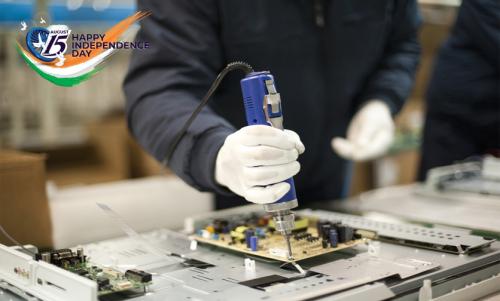What is the role of an MSME to make India self-reliant?

The following is the updated definition of MSME, as published by the Government of India, July 1, 2020:
Micro-business - Annual turnover less than Rs5 Crore
Small business - Annual turnover of Rs 50 Crore
Medium enterprise: Annual turnover below Rs250 Crore
There is more scope for MSMEs to take advantage of the government's benefits and grow their businesses with the inclusion of more businesses under the umbrella of MSMEs. The number of MSMEs in sectors such as telecommunications and healthcare has increased dramatically. This has resulted in increased exports to foreign countries and has created employment for many, contributing to the self-reliance journey.
India is a primarily agrarian country. Therefore, all states in India encourage MSMEs to enter the agricultural and food sector. The government created the Agriculture Infrastructure Fund to support MSMEs in agriculture and make India self-reliant in this area. It has a capital base in excess of Rs1 Lakh crore.
Many MSMEs became involved in production and distribution of essentials such as sanitisers, PPE kits and other items during the pandemic. These steps helped India become self-reliant in the face of global crises.
How can you align yourself to Aatmanirbhar Abhiyan
Local market needs must be met before global ones: Create your business plan with local audiences and needs in mind. Don't compromise authenticity for the sake of appearing international or urban. Serving the nation first, then the international audience with the same flavor of the national offerings.
Create a brand that is distinctive: Make your products in India. It is important to eliminate the use of foreign quality labels. You can make India a leader by following strict quality guidelines and ensuring that all products are made in India.
Find Indian suppliers for your products and services. Foreign purchase managers demand the same quality standards. You should make products that are both local and global. You must not forget about local needs in your efforts to reach the global market.
Don't neglect local wealth.Do you want to treat local customers differently than global ones? Local customers should have access to the same quality products and services as foreign customers.
How can you fit your business into the Self-Reliant India Framework for Business?
Search for business opportunities. Study the market to identify gaps and opportunities. Fill those needs with products and services from foreign suppliers.
Fulfill government tenders: Government tenders can be difficult to obtain but well worth the effort. Contribute towards improving the quality of public sector products.
Get local financing: When you are looking for finance for your business, consider Indian lenders and public sector units. Instead of foreign banks that are based outside India,
Use government policies: Make India more self-reliant by leveraging the funding and government schemes available to MSMEs, Keep up to date with government schemes, policies, and how to best use them to meet your business's needs. All concessions, low-cost financing, tax benefits, and other tools that the government offers to your company are available.
Avoid outsourcing.Repackage and assemble cheap foreign products in India. This reduces India's foreign reserves and makes it dependent on foreign manufacturers and suppliers.
Promote Made in India: It is important to encourage local business by sourcing raw material , suppliers , etc. India. Your entire product or service should be made in India.
Promote local expertise: Utilise tradition knowledge and solutions whenever possible. They were designed with our particular conditions in mind, and they have stood the test.
Hire local talent: Hire talent locally to run your business.
Use local research and technology:Utilise local labs and universities to meet all your science-based pharmaceutical, chemical, and electrical needs.
You can undercut foreign competition by offering competitive pricing. By sourcing, developing and manufacturing locally, you can provide a lower price for your goods or services.
What else should you do?
MSMEs can avail collateral-free loans up to Rs 3 Lakh Crore. The same loan can be used to pay operational liabilities, purchase raw materials or restart your business.
Subordinate debt is a subordinate loan that the government has given Rs20,000 crore. This equity assistance is for MSMEs that have non-performing assets or businesses that were affected by the pandemic.
The Government of India has given Rs4,000 Crore to the Credit Guarantee Fund Trust for Micro and Small Enterprises (CGTMSE), in order to help MSMEs. This will provide partial credit guarantee support for banks. This financial support will result in equity for the business unit. This equity comes from the banks' debt to the promoters for the MSME.
Fund of Funds provides equity capital in the form of Rs50,000 crore to MSMEs. This initiative aims to help MSMEs grow and be listed on Indian stock exchanges.
What should you do next?
Avoid sourcing products from abroad and instead, look for local suppliers and vendors.
You should cater to local markets and use international quality standards. Start a local brand and then focus on India until you find your niche.
Export as much as possible. It will help you to become a household name in your local area and lead you to global success.
Also Know:
nexarc, is one such portal where you can register your business for free, and find the latest Tenders & Quotations as buyers and sellers.
Post Your Ad Here
Comments